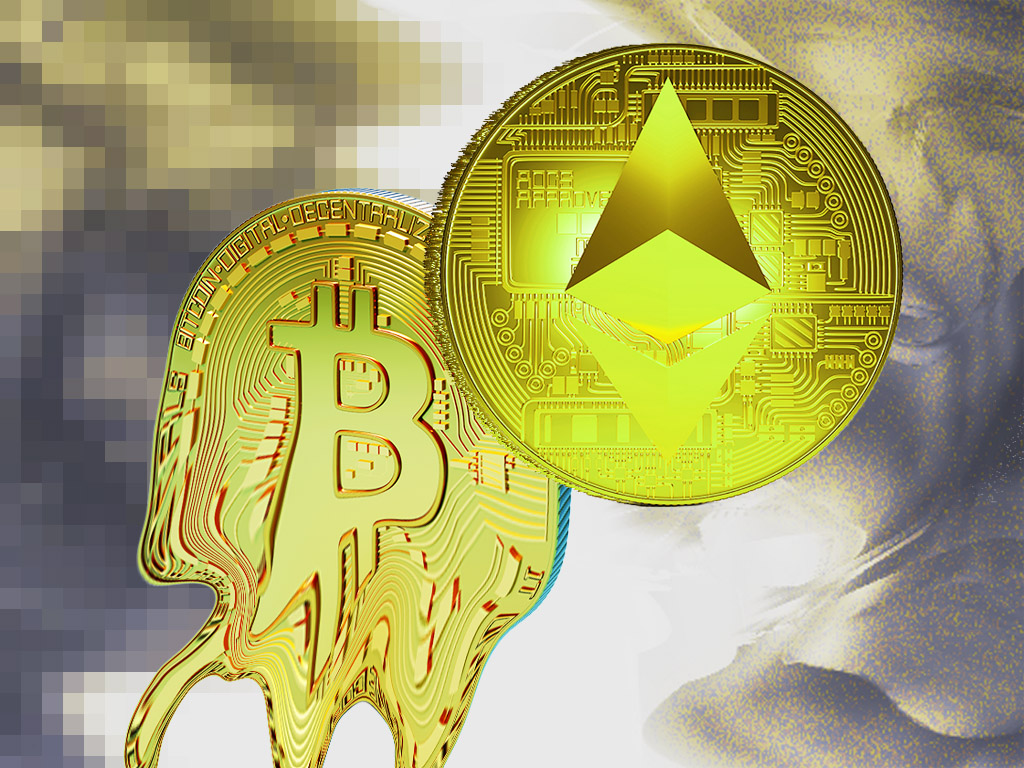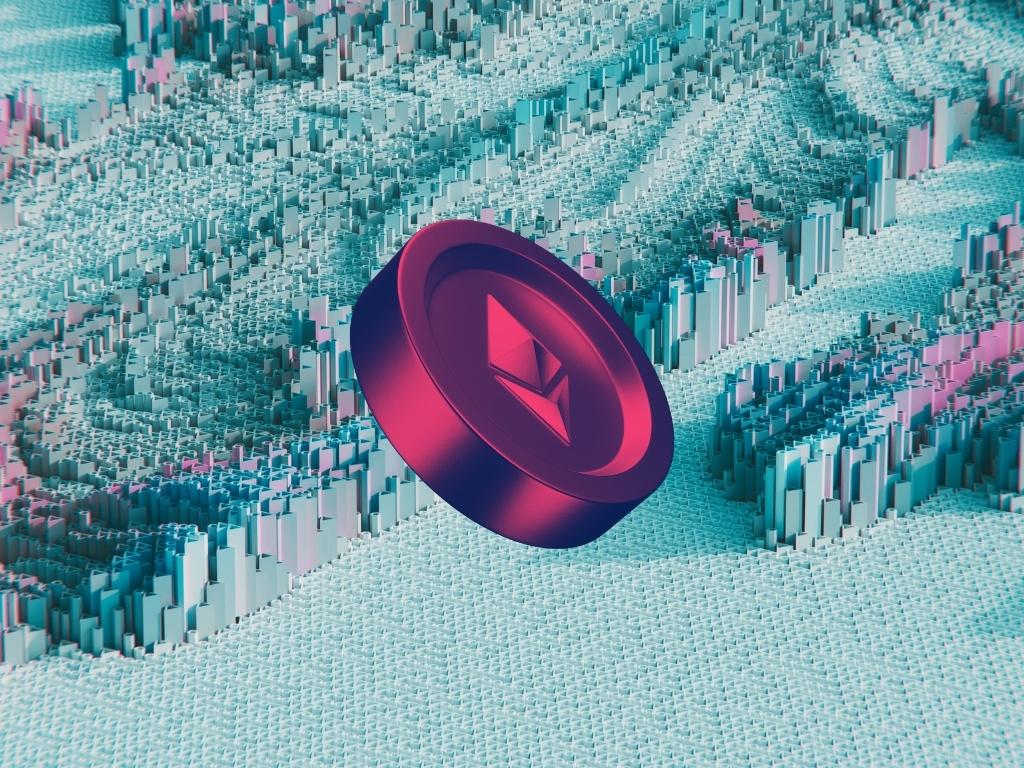Is it a good time to buy Ethereum (ETH), the second-largest cryptocurrency after Bitcoin (BTC)?
After the collapse of the Silicon Valley Bank (SVB), the question has been raised whether there will be flight to cryptocurrencies like Ethereum and Bitcoin.
The world’s most popular cryptocurrency, Bitcoin, is often referred to as ‘digital gold’. It reportedly has the highest market capitalisation of any cryptocurrency, which means that it has the highest total value. ‘Market cap’ is calculated by multiplying the current price to its circulating supply.
Coming in second place by market cap is Ethereum. The crypto referred to as ‘digital silver’ is used widely everyday. But this is where things can get a little confusing. Ethereum is actually a blockchain platform, or known as a distributed computer that applications can be built on. Ether (ETH) is the cryptocurrency that runs the Ethereum network, and creates transactions and monetary value. Sometimes these two terms are used interchangeably. But when talking about cryptocurrency, we are talking about ETH.
Some proponents of crypto hypothesise an event based on Ethereum’s fundamentals dubbed “the flippening”, where the value of Ethereum will one day be worth more than Bitcoin. But others suggest this is unlikely to be the case.

What you should know about staking ETH
Ethereum also differs to Bitcoin in that users often participate in what’s known as ‘staking’.
Staking in crypto is like putting your money in a term deposit savings account and earning interest. But the nature of cryptocurrency is that if a crypto’s value — including ETH — goes down, you could lose your interest on the original amount and may not offset a loss.
So, is now a good time to buy?
We’re not here to provide financial advice and you should always do your own research. Ethereum, like other currencies, is volatile, so there’s no evidence that you will always earn a profit. Since the beginning of the year, at the time of writing, Ethereum is up by more than 30%. Will it continue to rise in value or will it see a sharp fall? We asked some industry leaders what they think about the asset.
Tommy Honan, Swyftx
Tommy Honan is the head of commercial operations at Australian crypto exchange Swyftx. He says that most of the potentially big, break-out blockchain projects underway at the moment are based on Ethereum because it’s more user-friendly for developers.
“If you take a view that future cryptocurrency prices are going to be based on fundamentals, not hype, then Ethereum looks a solid long-term play at the moment. So far this year Aussies have been big accumulators of Ethereum. Just over 70% of all ETH trades on Swyftx have been buy orders. But short term it’ll be interesting to see what happens to its price after the Shanghai upgrade.”
The Shanghai upgrade comes after The Merge, which was an upgrade that moved the Ethereum network from an energy-hungry system called Proof-of-Work (PoW) to a much more environmentally friendly system called Proof-of-Stake (PoS).
The Shanghai upgrade is a planned update to the Ethereum blockchain platform, designed to improve efficiency and security, and provide more incentive for people to participate and stake in the network. Before the upgrade, Ethereum stakers were forced to ‘lock-up’ or hold their assets for an extended period of time, which reduced the incentive for people to participate.
More participators = more security of the network.
It’s named after the city in China, where the Ethereum community held a conference in 2019 to discuss the changes.
Honan shared that, “If you see a big dump of Ether into the market, you could see its price dip, but that’s not as certain as some commentators might have you believe. The incentive structure for staking Ether means you could see the opposite.”
Dominic Gluchowski, CoinJar
Dominic Gluchowski is the CMO of CoinJar, an Australian crypto exchange. He shared his expectations that even if Ethereum were to rise, it will likely drop to lower levels by the end of Q1 2024.
“Historically, US stock markets have fallen once the Federal Reserve started easing interest rates, and currently, cryptocurrency prices correlate with US stocks. However, I am optimistic about Ethereum’s medium- to long-term future due to its robust network effect and deflationary tokenomics.”

Dr John Hawkins, University of Canberra
Dr John Hawkins is a Senior Lecturer at the Canberra School of Politics, Economics & Society, University of Canberra. He says that Ethereum has more uses than Bitcoin.
“Since it moved to Proof-of-Stake, it is not the environmental disaster that Bitcoin remains. But markets seem to have shrugged off these developments. The Ether price (and that of most other altcoins, other than stablecoins) seems to move closely with the Bitcoin price. In recent months it seems strongly influenced by speculation about when and by how much the US Fed will raise interest rates.”
Dr Hawkins says that Bitcoin has failed in its initial goal of becoming a payments instrument in the last decade. “Even in El Salvador, where it has legal tender status and where shops are supposed to accept it by law, it is little used. It is not a means of payment, a store of value, nor a unit of account and so neither a currency nor money. It is just a speculative token with no underlying value. Other than stablecoins, the same can be said for other crypto.”
Central banks around the world are developing their own digital currencies, also called CBDCs. “They are already in use in the Caribbean and trials are well advanced in China. These will displace private crypto for uses such as smart contracts as they offer safety and stability of value. As the BIS chief economist put it, ‘anything crypto can do, CBDCs can do better’. So I do not see much long-term future for Ethereum.”
Nicolas Merton, Datadash
Nicolas Merton from Datadash doesn’t have similar levels of faith in the price of ETH. He forms his opinions by watching the technical price charts of cryptocurrencies.
He said in a video made last week, “We can see them in the long term that Ethereum is generally on a broader uptrend and that makes sense. Ethereum did incredibly well against Bitcoin over the past bull market. However as much as it’s been holding up … I think we are definitely in for a broader move to the downside.”
Sean Foley — Professor of Applied Finance, Macquarie University
Sean Foley’s research interests cover Fintech, cryptocurrencies, regulation, market design and trading. In Foley’s opinion, it’s a no-brainer with Ethereum.
“It is like investing in the infrastructure running the internet, as opposed to investing in Visa. There is always a demand for gas — the fundamental building block of Ethereum.”
Apart from Foley’s generally positive outlook on Ethereum, he says there are a number of specific items precipitating a “buy” decision for ETH.
“The March 2023 Shanghai upgrade will allow those who have staked their assets to validate the network to withdraw their assets. When staking was first made available in December 2020, there was no timeline by which the network would move to Proof-of-Stake, nor for when these funds would ever be able to be released.”
This uncertainty meant that staking made sense only for the most die-hard Ethereum long-term holders.
“Fast forward to March 2023, institutions and other large funds will be much more willing to stake Ethereum, knowing that they can retrieve it if they need. Given only 14% of the current ETH supply is staked (compared to over 70% of total supply on other PoS blockchains like Solana and Cardano), there is a high likelihood that many large players will be buying up Ethereum to begin staking.”
ETH deflationary supply
Some ETH used to power the Ethereum blockchain have been ‘burned’ — or removed from supply.
Says Foley, “Just like throwing a $2 coin into the ocean, it is no longer available for anyone to spend. The Merge to PoS in September 2022 also reduced the total emissions — or creation — of new Ethereum. Since the merge, the supply of Ethereum has reduced by 48,542 ETH, or over $115 million. Over this same period, the supply of Bitcoin has increased by over 162,000 BTC, or $5.5 billion. With Ethereum supply continuing to reduce, price pressure is likely to remain positive.”
Foley says that with BTC supply increasing at a decreasing rate (for a total of 21m bitcoins in total), many called this “sound” money. With Ethereum supply decreasing, many have called this “UltraSound Money“.
Energy efficiency
Proof-of-Work cryptocurrencies are notoriously energy hungry. Says Foley, “Bitcoin currently consumes over 126 TerraWatts of electricity per year — more electricity than either the Netherlands or Argentina, and over 50% of the total annual electricity consumption of all of Australia! Since the move away from PoW to PoS in 2022, Ethereum energy consumption decreased by 99.95% — now using far less than even Visa. This makes Ethereum one of the only ‘green’ cryptocurrencies and stands it apart from most PoW coins. Such a transition provides a massive advantage to Ethereum, particularly as the world faces the impacts of climate crisis and energy price rises in the face of the Ukraine war.”

Is it a good time to buy ETH?
It depends, and the cryptocurrency market’s volatility is haunting all investors while we are in a bear market.
Some of the experts think that ETH has strong fundamentals and could continue to grow in value in the long term. However, there are risks, including tightening regulations for all cryptocurrencies.
As with any investment, it’s important to do your own research, understand the risks, and make informed decisions.





